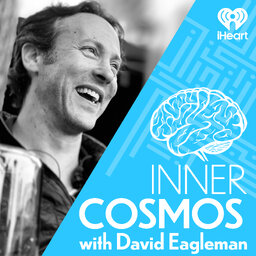Ep5 "How is your brain like a team of rivals?"
Would you kill one person to save the lives of five others? Why do you find yourself on the horns of a dilemma when someone offers you a chocolate cake? How can you believe different things at once? Find out what's running under the hood in this first episode of a three-parter about our decision making -- and how a little knowledge of neuroscience can allow us to make better decisions.
 Inner Cosmos with David Eagleman
Inner Cosmos with David Eagleman


